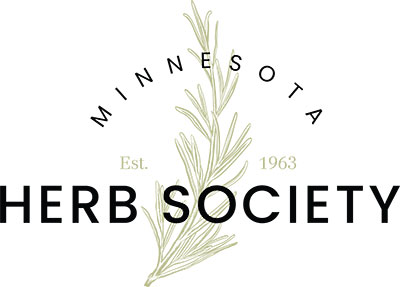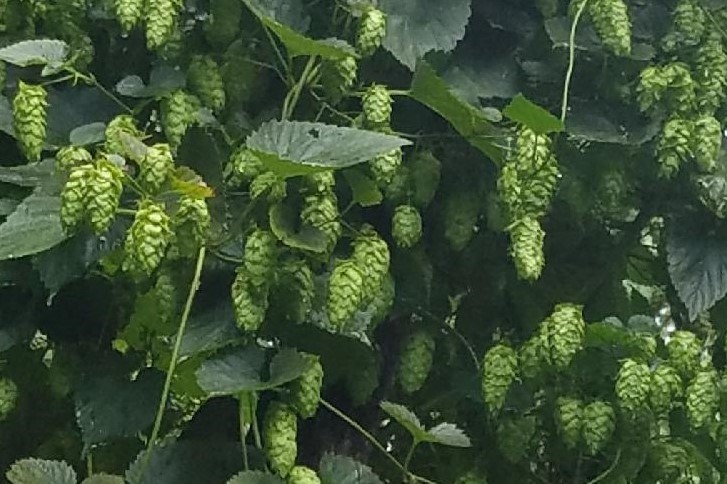What are hops?
Hops are the flowers of the hop plant (Humulus lupulus). They are used primarily as a flavoring and stabilizing agent in beer, to which they impart bitter, zesty, or citric flavors. Many different varieties of hops are grown by farmers around the world, with different types being used for particular styles of beer.
History
The three main ingredients of beer are malted grain, yeast and water. These ingredients yield a sweet and uninteresting drink, so for probably centuries, brewers have been adding extra things to counter the sweet and make the beer more interesting. Originally, gruit was used. This was a combination of a wide variety of bitter herbs and flowers, including dandelion, burdock root, marigold, horehound, ground ivy, heather and many others. [Wikipedia]
The first documented use of hops in the making of beer was over 1000 years ago in what is now Germany. They were initially used for flavor and aroma. The bitterness of the hops countered the sweetness of the malt. It was noticed that beers made with hops were less likely to spoil. This was due to the antibacterial effect of hops on undesirable microorganisms which appear during fermentation. Over a period of several hundred years, the cheaper cost of hops and the apparent preservative effect of the hops on the beer, lead to the eventual abandonment of gruit. It should be noted that the herbs and flowers contained in some of the gruit mixes were also antibacterial, also the gruit market tended to be tightly controlled and taxed. For many centuries beer makers switched between gruit and hops, depending on which was taxed more heavily.
What are the properties of hops that are important in brewing beers?
There are three types of hops: bittering hops and aroma hops.
- Bittering hops have a high concentration of acids known as alpha acids which typically average 5% – 9% by weight (AABW) for European hops aka Noble hops. These are the traditional hops of Germany which produce the pilsners and lagers.
- The newer American cultivars average 8% – 19% AABW. These acids contribute much of the bitter or citrus taste of beer.
- Aroma hops, aka English hops, typically have less than 5% AABW. Their essential oils contribute hops’ aromas and non-bittering flavors. These produce the traditional British ales.
The acids also have an antibacterial effect which increases the shelf life of beer.
How are hops used in brewing beers?
The wort (sugar-rich liquid produced from germinated cereal grains) is boiled with hops before it is cooled down and yeast is added, to start fermentation. The type of hops and the amount of time it is boiled determines the flavor – the longer the hops are boiled the more bitter the flavor. One possible disadvantage of hops in the very early history of brewing might be that the time needed to boil the wort was not possible. Bittering hops are typically boiled for over an hour to get the maximum bitterness. This amount of boiling will destroy most of the essential oils thereby limiting the aromas and the subtler flavors. Aroma hops used for flavor are usually added during the last half hour of boiling to preserve the essential oils and the more delicate hops flavor. When added during the last ten minutes it will also preserve the aroma of the hops. Aroma hops can also be added after the wort has cooled and begins to ferment. This technique is known as “dry hopping” and also contributes to the hop aroma. This produces pale ales and IPAs. The bitterness is measured in International Bitterness Units or IBUs. The composition of hop essential oils can differ between varieties and between years in the same variety which in turn leads to significant differences of the flavor and aroma of the beer. Hop acids also contribute to and stabilize the foam qualities of beer. “Flavors and aromas are described appreciatively using terms which include “grassy”, “floral”, “citrus”, “spicy”, “piney”, “lemony”, “grapefruit”, and “earthy”. Many pale lagers have a fairly low hop influence, while lagers marketed as Pilsner or brewed in the Czech Republic may have noticeable noble hop aroma. Certain ales (particularly the highly hopped style known as India Pale Ale, or IPA) can have high levels of hop bitterness.” [Wikipedia]
Other sources
http://allaboutbeer.com/learn/beer/hops/

